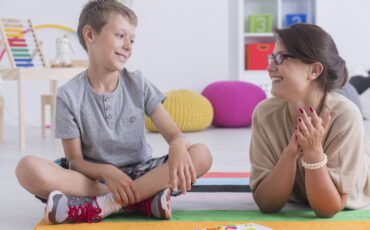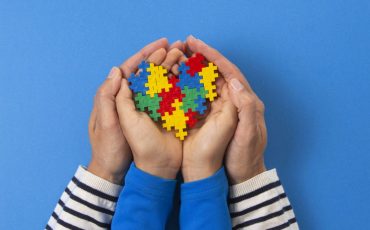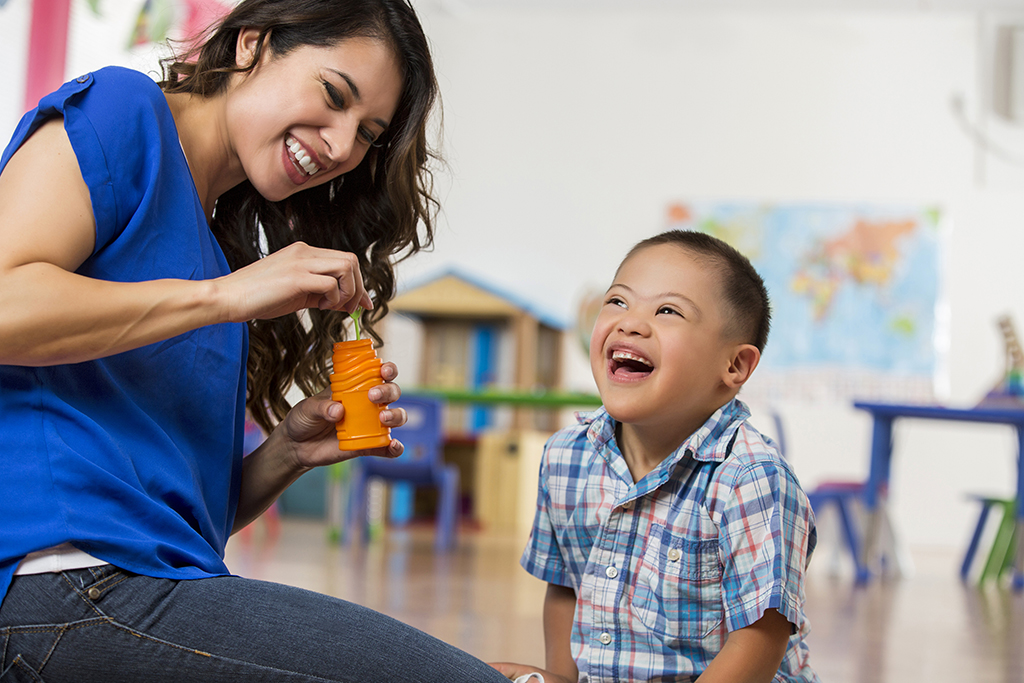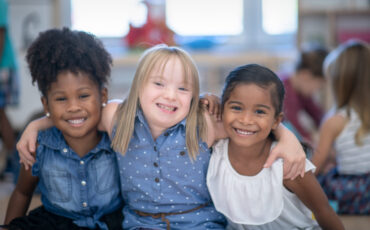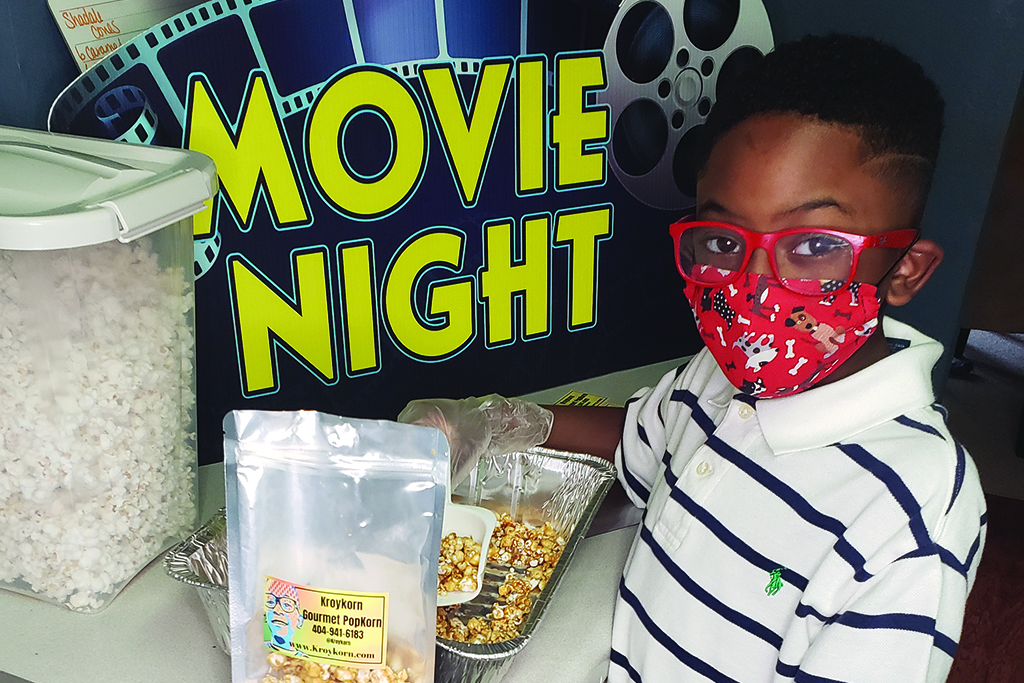Autism Changes the Way Kids See the World
“Your whole neurology, your whole brain, your whole way of seeing the world is different,” said Dr. I. Leslie Rubin, the Developmental Pediatrician at The Rubin Center for Autism and Developmental Pediatrics. “These kids are quite different in how they see people and the world. Our observations of them are a reflection of the expectations we have. Children and people with ASD see the world in different and unique ways — we learn as much from them as they learn from us.”
ASD is a neurodevelopmental disorder affecting a child’s social skills, communication or behavior. Receiving an official diagnosis is the first step in receiving services, including help with education and insurance. With ASD, a child’s brain develops and works differently, both inside and outside of school.
Learning in the Classroom
Each child with autism has a distinctive learning profile. Some may be talented in noticing details or remembering facts, while others show a talent in the arts. Many struggle in similar ways with sensory issues, social experiences, attention, language and executive functioning (the part of the brain that plans and executes complex behaviors).
“The big thing for teaching neurodiverse kids is to allow learning in many, many different ways,” said Dr. Michael Siller, the Executive Director of the Marcus Autism Center’s Louise and Brett Samsky Preschool, an inclusive preschool for ages 2-4. “In education, there is this concept of Universal Design for Learning, which advises teachers from the get-go to offer lots of different learning opportunities. Because learning starts with motivation, we have to offer different ways of connecting with learning opportunities and getting students invested. They have behaviors that make it hard for them to stay invested, as they might have sensory issues, it might get too loud for them, or it might get too crowded for them. Allow children to live with their sensory peculiarities, but still participate in learning, even if they have to wear headphones or have a special seat.”
Children with autism may have difficulty shifting attention to a new task, problems with memory processes or listening to verbal instructions. Using the learning styles of visual, auditory and kinesthetic can help children.
“Most kids have problems with auditory and do better in visual, but if given information visually and auditorily, they do even better,” Rubin said. “Some kids will not be able to follow what the teacher says, but they look at their next-door neighbor and what they’re doing and know that’s what they’re supposed to do. Some kids have incredible memories; they can recite dialogues of their favorite videos, or they have a good visual-spatial memory, almost like they have a built-in GPS. It’s a different kind of learning for all children.”
Some kids may be better at learning via music or by watching other people perform the action. Some kids with autism also use communication devices, such as computer-based push buttons.
“Visuals help kids with autism because communicating verbally is sometimes hard,” Siller said. “Visual learners need to see and have graphics to visualize the steps of an activity or to know what’s expected of them throughout the day. Some children need visual schedules for what’s next or visuals for recognizing their emotions.”
Understanding a student’s learning preferences may be trial and error. Some nonverbal children cannot process visual and auditory input at the same time and would only be able to focus on one or the other.
“Our kids are just amazingly unique,” said Debbi Scarborough, the Founder and Head of School of Cumberland Academy of Georgia, a private school specializing in the needs of children with Asperger’s, ADD, ADHD, high-functioning autism, PDD-NOS and learning disabilities. “They are literal kids: they need structure; they think in black and white; they really need to know what to do; they question you if they don’t understand it. We need to give them clear instruction and may need to give them accommodations, where a neurotypical child wouldn’t need those accommodations. They’re bright, but it’s a lot of processing for them and stimulation, and you have to be careful with that.”
Dealing with Challenging Behaviors
ASD is often understood through the behavioral challenges a neurotypical child would deal with less frequently.
“We like to think of kids in bins, and kids with autism have specific things they struggle with,” Siller said. “But they’re not the only ones who struggle; other kids struggle with communication, self-regulation, executive functioning, knowing how to wait. Kids with autism may need a little bit more help, but we’re more similar than we are diverse.”
Often, children with autism take part in special therapy services, such as behavioral, speech, language, physical or social-relational.
“Learning is rewiring your brain,” Rubin said. He likens the process to learning to play a musical instrument. “At the start, you don’t know anything about the instrument, let alone how to read music. But the more you practice, the more you’re able to play, and then, you can do it without looking at the music. You’ve created new pathways in your brain. Therapies are mechanisms for creating new pathways in the brain. Therapies use repetitious elements to help children learn, and one-on-one engagement helps them to relate to another person. The ultimate goal for learning is how to be independent and best function in society.”
Some schools incorporate specific classes into the instruction to help students with behavioral challenges. Cumberland Academy of Georgia integrates social and life skills into students’ schedules to teach how to interpret social cues, demonstrate appropriate social pragmatics and put them to practice. The day also begins with unstructured time to allow students to interact with each other, and kids can participate in sports and afterschool clubs for more engagement.
“The spectrum is just so wide range, but for some students, behaviors are more about frustration,” Scarborough said. “Some students get frustrated because they think they’re going to get it wrong, and they want to be perfect. Some may get frustrated at a noise in class that bugs them. You have to know what triggers the students and give them a break when needed. We teach them to learn coping skills, which is done in the social skills classes and with the counseling department.”
The school has seen success with the incorporation of academics and skills classes. “We had a 100% college acceptance rate in last year’s senior class,” she said. “We want to teach them to love to learn, and it’s important that they understand it.”
One misconception Scarborough deals with is that ASD relates to troubling behavior. “These are kids who cannot predict the intentions of others, because they don’t understand social cues,” she said.
Rubin explained ASD behaviors are often a reflection of the societal expectations we hold. “One of the characteristics of ASD is they do not make eye contact. That’s not totally true; it’s just that the quality of eye contact is different. These individuals may not make as good eye contact, because they think and learn differently. There’s a phenomenon in psychological evaluation called processing speed, which describes the speed with which you process information. For most children with autism, processing speed is one of the lowest scoring elements. It speaks to the difficulty of taking information in, making it work and being able to respond.”
Reacting differently to an expected social norm can allow children with autism to keep their brains on track to whatever task or conversation is at hand.
Helping at Home
As a parent, understanding the special way your child thinks can help you to be more effective at teaching your child new skills and enforcing learning at home.
You can use visual systems at home to help your child, such as using graphs for tasks or chores. Visual schedules or timers may also help children with transitions. Break big tasks down into small, manageable steps to help your child understand how to get started and see that they are making progress.
Kids may seem distractible, because when they see an object, they are immediately drawn to it. Try to clear away distractions before beginning a learning activity. Some kids may have items they fixate on, such as trains or dinosaurs. It may help to incorporate these fixations into your activities, such as reading themed books or using toys to demonstrate numbers.
You may also need to provide explicit instruction for new skills. Learning new things you’ve never been taught is called implicit learning, but children with autism need more help with these types of tasks, such as reading body language, trying new foods or playing pretend. You can help by demonstrating how to do something.
To help with behavior, teach a self-calming routine for your child to do right when they start to get frustrated, or even before they begin a challenging task. Don’t be afraid to ask for help. Ask your child’s teacher or therapist what strategies they use with your child that you can implement at home.
“For parents, make learning meaningful to children,” Siller said. “There are opportunities in everyday activities to embed learning. On a walk, at the grocery store, getting dressed — there are lots of opportunities to embed communication and life skills in these routines. For children, we want them to be intrinsically motivated. We can help kids along the way with rewards, if we have expectations for children that we want to encourage. Be mindful of these expectations and give them feedback along the way that they’re on the right track.”
This story was originally published in our April 2023 issue.





